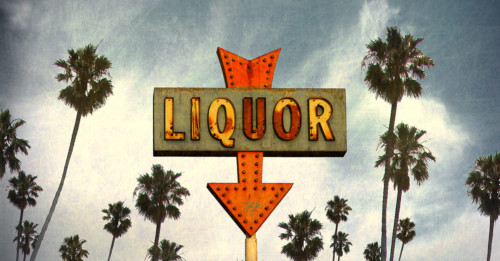Nobody goes to a spirits store. When we want hard alcohol, we go to a liquor store. Where they sell spirits. Aka liquor. Which shouldn’t be confused with liqueur…Right?
Alcohol terminology can get confusing. Thankfully, for our purposes, and most purposes in the selling and consumption of fermented, distilled beverages, “spirits” and “liquor” are the same thing: a hard (the hardest) alcohol product made by distillation, often clocking in around the 40% ABV mark, possibly flavored but always unsweetened—the stuff of good sipping, hearty toasting, and ill-conceived drinking contests.
But what about liqueur? That one’s pretty easy, too. Liqueur is made from liquor; it’s sweetened, often flavored (think almondy Amaretto or chocolatey Crème de Cacao), and generally lower proof. And just as spirits is the same thing as liquor, a liqueur is basically the same as a cordial. If someone offers you a cordial, usually after dinner, maybe even as dessert, expect a sweet, flavored alcoholic beverage served in small quantities. (In Europe, a “cordial” may refer to something sweet that’s alcohol free.)
But is this cordial a digestif or an aperitif? Or a digestive or apertivo? Don’t worry! Even when French and Italian terms come into play, it’s all still pretty simple. In this case it isn’t so much about the contents of the drink as the timing: the terms digestif/digestivo and aperitif/apertivo refer to kinds of alcoholic beverages that are drunk as either a way to stimulate the appetite (aperitif) or as a way to begin the metabolic unwinding process after a meal (digestif). Different things can be drunk as aperitifs and digestifs, but usually it’ll be a liqueur, an Amaro (bitter liqueurs), brandy, or fortified wine.
One more term to note—bitters. While liquors and liqueurs can all be consumed by themselves (as digestifs or apertifs or as simple drinks, no meal required), bitters are an ingredient, used primarily in cocktails (though they can also be used, and were originally innovated, for medicinal purposes). Bitters are a non-potable product made with a spirits base and characterized by intense flavoring. As the name suggests, bitters can be bitter, but they can also be bright and citrusy, spicy, herbal, smoky, etc. And because of their strong flavoring, bitters are used the way you might use cloves or thyme—like a seasoning, in small doses, a way to finish and flavor a recipe.
So yes—spirits terminology can get confusing, but there’s a common ingredient running throughout (liquor, the base of all of it) and a few fairly simple relationships at play. Here’s a simple breakdown:
- Liquor/Spirit: an alcoholic product that’s made from a grain- or fruit/vegetable-derived sugar that’s fermented and distilled, yielding a lower water content and higher ABV
- Liqueur: made from liquor, sweetened and often flavored
- Apertif/Apertivo: a lower ABV beverage traditionally taken before a meal, flavored in a variety of ways but usually lighter and drier in flavor profile to stimulate the appetite
- Digestif/Digestivo: a lower ABV beverage traditionally taken after a meal, often flavored with herbs and spices known to aid digestion
- Bitters: A heavily flavored, low ABV product used as a kind of seasoning/spicing ingredient in cocktails
- Potable Bitters: Another name given to bitter liqueurs, aka “bitter amaros,” which are traditionally drunk as digestifs.
